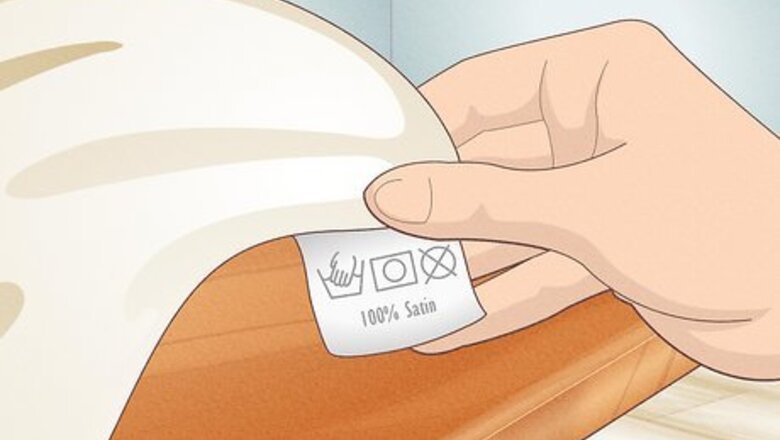
views
- Check the tag for washing instructions. Hand wash high-end, delicate satin mixed with silk or acetate, or take “dry clean only” items to a cleaner.
- Machine wash satin pillowcases with a gentle detergent and cold water on a delicate setting. Put the pillowcases in a mesh laundry bag for protection.
- Air dry them on a clothesline or on top of a fluffy towel away from direct sunlight. Use a steamer or an iron on low heat to get rid of wrinkles.
Read the care instructions on the tag.
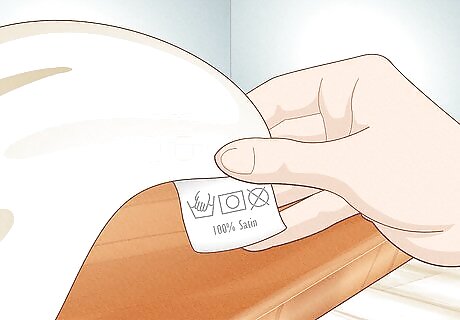
Check if the case is machine or hand washable or dry clean only. If the satin fabric contains polyester or nylon, use the washing machine. Hand wash satin with silk or acetate, or take the pillowcase to the cleaners if it says “dry clean only.” To be safe, take very high-end satin with a large silk content to the cleaner, too. If there’s no tag, assume it's delicate and avoid the washing machine. If it’s part of a sheet set, it’s likely polyester and safe to machine wash. Some labels may indicate the pillowcase is suitable for hand washing (no machines). These cases are also safe to take to a dry cleaner. Silk is a natural fiber, whereas satin is a weave that often contains silk and/or synthetic fibers like acetate, nylon, or polyester.
Pretreat any stains or spots.
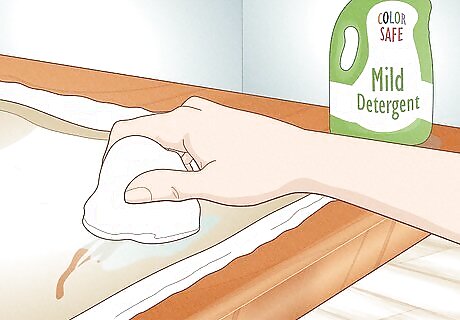
Dab stains with a mixture of gentle detergent and cool water. First, place the pillow on a clean, white towel on a flat surface. Mix a few drops of a gentle detergent formulated for delicate fabrics with cool water in a bowl, then dab the soapy water onto the stains with a clean cloth. Keep dabbing until the stain loses its color. Make sure to dab lightly and not to rub the cloth. This can push the stain deeper into the fabric and damage the pillowcase fibers. When the stain disappears, wash the pillowcase as indicated on the tag.
Hand wash extra delicate pillowcases.
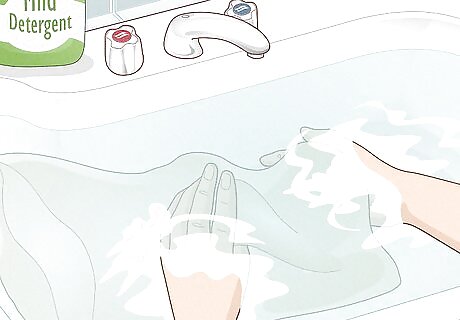
Wash in cool water and 2 US tbsp (30 mL) baby shampoo or detergent. Gently agitate the fabric with your hands, making sure not to squeeze or distress the satin. Drain the water and rinse the pillowcase with cool water until all soap suds have disappeared. Extra delicate pillowcases include those made from luxury satin or blends of high-quality silk or acetate. Add 1 tbsp (13.8 g) of borax to the tub if you have hard water. If you can’t get all the soap out, mix 2 US tbsp (30 mL) of distilled, white vinegar to your rinsing water to help lift stubborn suds. Roll the pillowcase inside a clean towel to soak up excess water, then hang it up away from direct sunlight to air dry.
Turn machine washable pillowcases inside out.
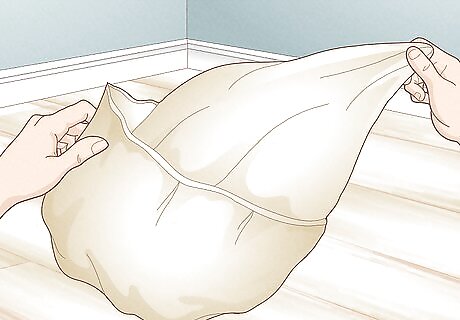
Flip the pillowcases so the inner lining is showing on the outside. The lining will protect the satin outer layer from rubbing against other, rougher objects in the washing machine. Even though it’s inside out, the satin layer will still get cleaned thoroughly.
Place the pillowcase in a mesh laundry bag.
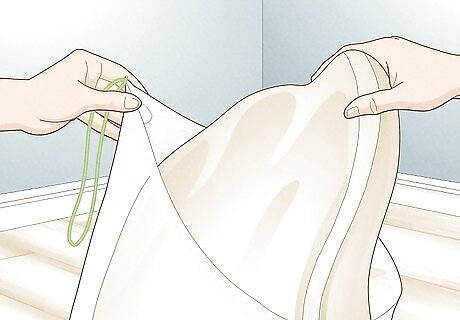
Bagging satin pillowcases and sheets prevents tangling and snagging. Use the same type of bag you might use for other delicates or lingerie. This will keep the fragile satin from getting caught on the machine’s agitator or from rubbing against more abrasive, damaging fabrics like denim.
Wash with similar fabrics and colors.
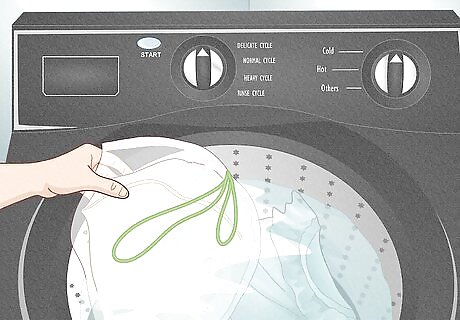
Place your bagged satin pillowcases in the same load as other delicates. If you don’t have anything else that you can wash with your pillowcases, wash them by themselves. Washing with other delicates in a similar color means you don’t have to worry about color bleeding, and it’s another layer of protection against other abrasive fabrics. Wash most delicate garments in cold water alongside your satin pillowcases.
Use a gentle detergent for delicates.
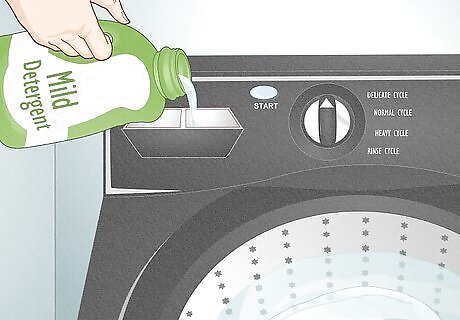
Use slightly less than the normal amount of detergent to avoid buildup. Opt for liquid detergent over powder since it dissolves better in cold water. Most detergents you have on hand are probably OK—just don’t use anything with harsh chemicals like bleach, fabric softener, or stain removers. In a pinch, use baby shampoo or sulfate-free shampoo instead of detergent. These remove grease and oil from the satin gently. If desired, add 0.5 c (120 mL) of distilled, white vinegar to your laundry in place of fabric softener.
Machine wash in cold water on a gentle cycle.
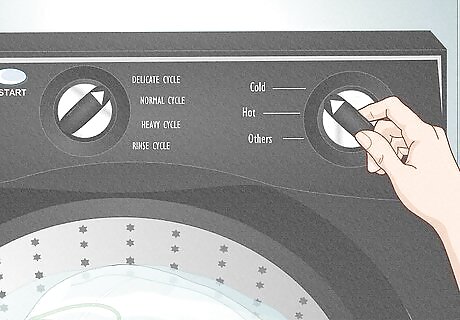
Use a delicate cycle or choose the lowest spin setting on your machine. Make sure the water temperature is cool or cold—warm or hot water can shrink satin or damage the fabric fibers. When the cycle is finished, remove your satin items quickly so they don’t sit and wrinkle.
Air dry the pillowcases.
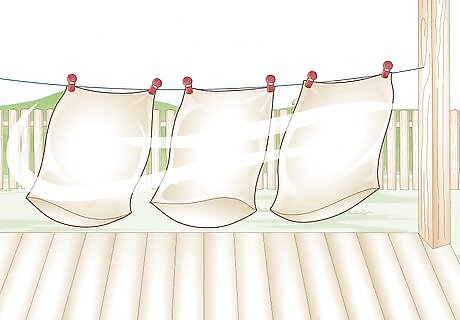
Pin the cases to a clothesline or lay them flat on a towel to dry out. First, shake the case to get rid of excess water (never wring or twist satin while it’s wet or it will permanently warp or wrinkle). Hang your pillowcase on a clothesline unless the tag says to dry flat or if the fabric contains wool or silk. To dry the case flat, lay it on top of a fluffy, clean towel. This will allow it to dry thoroughly on both sides. When air drying, keep the pillowcase away from direct sunlight (it can fade the color). Avoid using the dryer if possible. Even a no-heat, gentle cycle could damage the delicate fabric.
Steam or iron the pillowcase if there are wrinkles.
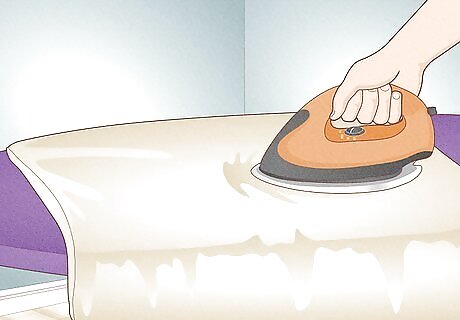
Hang up the pillowcase and use a hand steamer to unwrinkle it. Hold the steamer a finger’s length from the fabric and work up and down in sections. Resist the urge to stead the back of the fabric with your hand to avoid burning yourself on accident. If you’re ironing satin, place a towel on top of the pillowcase and iron over it. Use the lowest heat setting and don’t let the iron sit in one spot. Don’t use an iron if the fabric is blended with silk or acetate (they’re too delicate).
Fold and store the pillowcase to prevent wrinkles.
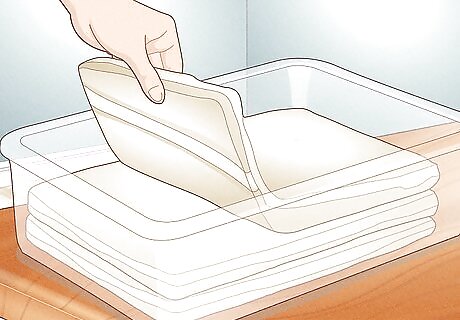
Fold the pillowcase in thirds lengthwise, then in half twice across. Store it in an airtight container, like a plastic closet organizer, to prevent wrinkles, keep it fresh, and save space in your closet or on your shelves. Next time you need a fresh satin pillowcase, it will be ready to go!
















Comments
0 comment